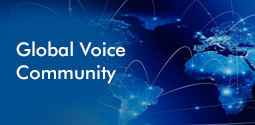What is CDMA?
One of the most important concepts in any cellular telephone system is that of “multiple access”, meaning that multiple, simultaneous users can be supported. In other words, a large number of users share a common pool of radio channels and any user can gain access to any channel (each user is not always assigned to the same channel). A channel can be thought of as merely a portion of the limited radio resource, which is temporarily allocated for a specific purpose, such as someone’s phone call. A multiple access method is a definition of how the radio spectrum is divided into channels and how channels are allocated to the many users of the system
Code Division Multiple Access (CDMA) is a digital wireless technology that was pioneered and commercially developed by QUALCOMM.
Though CDMA’s application in cellular telephony is relatively new, it is not a new technology. CDMA has been used in many military applications, such as anti-jamming (because of the spread signal, it is difficult to jam or interfere with a CDMA signal), ranging (measuring the distance of the transmission to know when it will be received), and secure communications (the spread spectrum signal is very hard to detect).
Commercially introduced in 1995, CDMA quickly became one of the world’s fastest-growing wireless technologies. In 1999, the International Telecommunications Union selected CDMA as the industry standard for new “third-generation” (3G) wireless systems. Many leading wireless carriers are now building or upgrading to 3G CDMA networks in order to provide more capacity for voice traffic, along with high-speed data capabilities.
Today, over 100 million consumers worldwide rely on CDMA for clear, reliable voice communications and leading-edge data services.
How does CDMA technology work?
CDMA works by converting speech into digital information, which is then transmitted as a radio signal over a wireless network. Using a unique code to distinguish each different call, CDMA enables many more people to share the airwaves at the same time – without static, cross-talk or interference.
How has CDMA developed over the years?
The world’s first cellular networks were introduced in the early 1980s, using analog radio transmission technologies such as AMPS (Advanced Mobile Phone System). Within a few years, cellular systems began to hit a capacity ceiling as millions of new subscribers signed up for service, demanding more and more airtime. Dropped calls and network busy signals became common in many areas.
To accommodate more traffic within a limited amount of radio spectrum, the industry developed a new set of digital wireless technologies called TDMA (Time Division Multiple Access) and GSM (Global System for Mobile). TDMA and GSM used a time-sharing protocol to provide three to four times more capacity than analog systems. But just as TDMA was being standardized, an even better solution was found in CDMA.
The founders of QUALCOMM realized that CDMA technology could be used in commercial cellular communications to make even better use of the radio spectrum than other technologies. They developed the key advances that made CDMA suitable for cellular, then demonstrated a working prototype and began to license the technology to telecom equipment manufacturers.
The first CDMA networks were commercially launched in 1995, and provided roughly 10 times more capacity than analog networks – far more than TDMA or GSM. Since then, CDMA has become the fastest-growing of all wireless technologies, with over 100 million subscribers worldwide. In addition to supporting more traffic, CDMA brings many other benefits to carriers and consumers, including better voice quality, broader coverage and stronger security.
What are the benefits of CDMA?
When implemented in a cellular telephone system, CDMA technology offers numerous benefits to the cellular operators and their subscribers. The following is an overview of the benefits of CDMA.
1. Capacity increases of 8 to 10 times that of an AMPS analog system and 4 to 5 times that of a GSM system
2. Improved call quality, with better and more consistent sound as compared to AMPS systems
3. Simplified system planning through the use of the same frequency in every sector of every cell
4. Enhanced privacy
5. Improved coverage characteristics, allowing for the possibility of fewer cell sites
6. Increased talk time for portables
7. Bandwidth on demand
How does CDMA technology compare with earlier technologies?
Different types of cellular systems employ various methods of multiple access. The traditional first generation (1G) analog cellular systems, such as those based on the Advanced Mobile Phone Service (AMPS) and Total Access Communications System (TACS) standards, use Frequency Division Multiple Access (FDMA). FDMA channels are defined by a range of radio frequencies, usually expressed in a number of kilohertz (kHz), out of the radio spectrum.
A common multiple access method employed in second generation (2G) digital cellular systems is the Time Division Multiple Access (TDMA). TDMA digital standards include North American Digital Cellular (know by its standard number IS-54), Global System for Mobile Communications (GSM), and Personal Digital Cellular (PDC).
TDMA systems commonly start with a slice of spectrum, referred to as one “carrier”. Each carrier is then divided into time slots. Only one subscriber at a time is assigned to each time slot, or channel. No other conversations can access this channel until the subscriber’s call is finished, or until that original call is handed off to a different channel by the system.
With CDMA, unique digital codes, rather than separate RF frequencies or channels, are used to differentiate subscribers. The codes are shared by both the mobile station (cellular phone) and the base station, and are called “pseudo-Random Code Sequences.” All users share the same range of radio spectrum.
One of the unique aspects of CDMA is that while there are certainly limits to the number of phone calls that can be handled by a carrier, this is not a fixed number. Rather, the capacity of the system will be dependent on a number of different factors.
Just as the second generation of wireless technology improved upon earlier systems, the industry looked to a third generation of technology for more advances. Although wireless was used almost exclusively for voice communication, the ability to deliver data over the air was also very promising, especially as Internet users and content proliferated.
In 1999, the International Telecommunication Union adopted an industry standard for third-generation (3G) wireless systems that can deliver high-speed data and other new features. The 3G standard includes three operating modes based on CDMA technology, and over 50 leading manufacturers have already licensed 3G CDMA from QUALCOMM


 +91-9815411990
+91-9815411990 training@globalvoiceindia.com
training@globalvoiceindia.com





